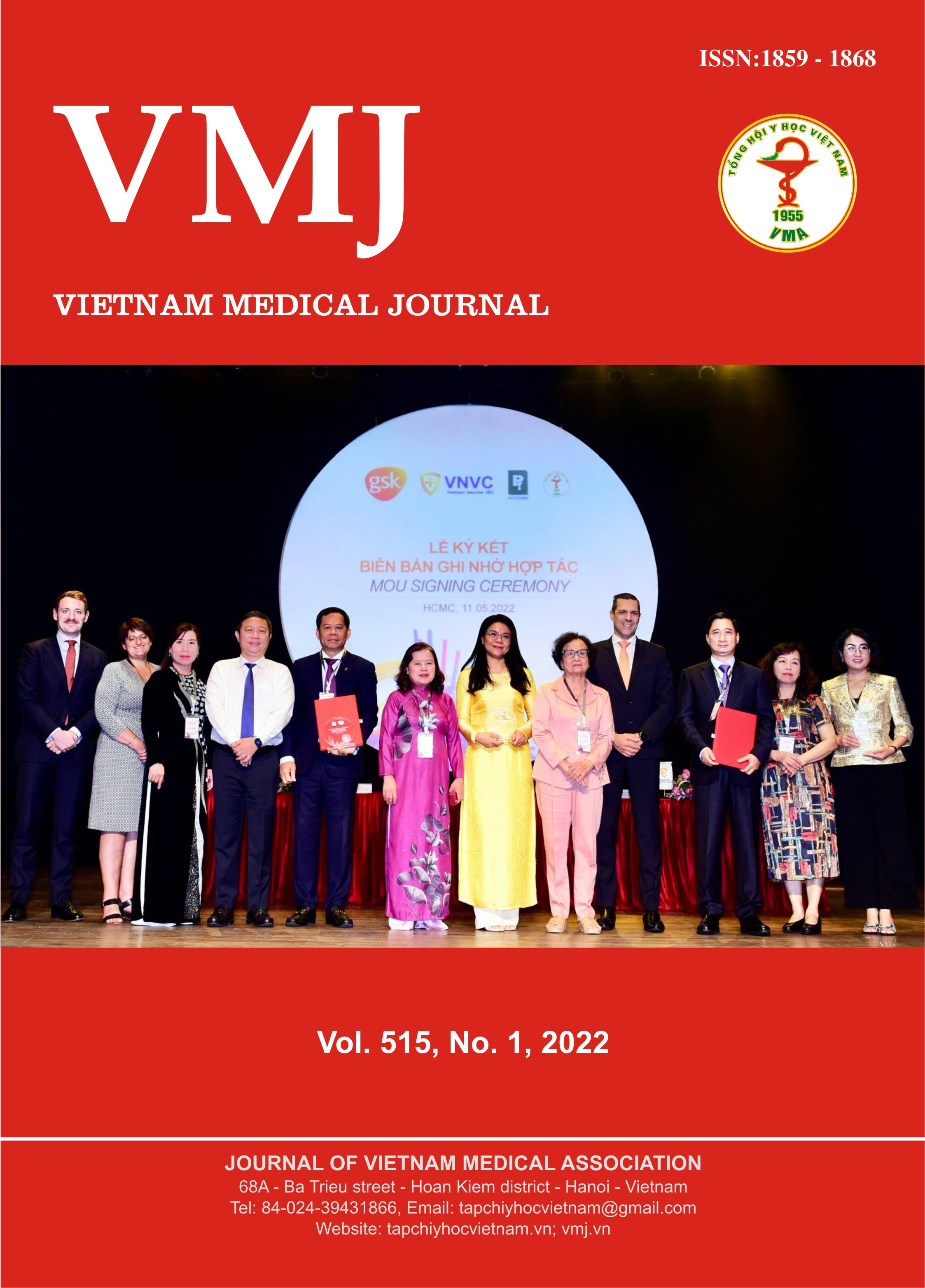EVALUATION ON RESULT OF SURGICAL TREATMENT FOR SCALP DEFECT AFTER CANCER RESECTION AT THE MAXILLOFACIAL AND PLASTIC SURGERY DEPARTMENT IN 108 CENTRAL MILITARY HOSPITAL
Nội dung chính của bài viết
Tóm tắt
Objectives: To describe the clinical features and classify the scalp defect after cancer resection; Evaluate the surgical effectiveness of scalp defect treatment by local tissue. Object-Method: 25 patients with scalp defects after cancer resection are treated with plastic surgery with local tissue; Non-controlled clinical intervention, progressive research. Results-Discussion: The average age of the patient was 66.33; The main cause is squamous and basal cell epithelial cancer; skin defects are mainly large types> 20cm2 (52%), extensive surgery of scalp flap shaping surgery combined with skin grafting accounts for 52%. The near result was good at 68%; the far results are good with 80%. Conclusion: In elderly patients with many combined diseases when there is a medium (5-20 cm2) and large (> 20 cm2) scalp defect, the use of local skin flap in combination with skin graft is the best treatment option.
Chi tiết bài viết
Từ khóa
scalp defect, scalp cancer, superficial temporal pedicle flap, occipital pedicle flap
Tài liệu tham khảo
2. Cherubino M., et al. (2013). A New Algorithm for The Surgical Management of Defects of the Scalp. ISRN Plast Surg, 2013, 1-5.
3. Cleyton .D. Souza (2012). Reconstruction of large scalp and forehead defects following tumor resection: personal strategy and experience - analysis of 25 cases. Rev Bras Cir Plást. 2012;27(2):227-37.
4. Keck M, et al (2012). Primary cutaneous adenoid carcinoma of the scalp. GMS Interdiscip Plast Reconstr Surg DGPW. 2012;1:Doc04
5. Nguyen Bac Hung (2006), Lecture on plastic surgery.
6. Nguyen Bac Hung (2017), Lecture on cosmetic plastic surgery.
7. Nguyen Huy Phan (1999), The history of neurosurgery technology development in the world and in Vietnam.
8. Onishi K., et al. (2005). Repair of scalp defect using a superficial temporal fascia pedicle VY advancement scalp flap. Br J Plast Surg, 58 (5), 676-680.
9. Uwe Wollina, et al (2012). Giant Epithelial Malignancies (Basal Cell Carcinoma, Squamous Cell Carcinoma): A Series of 20 Tumors from a Single Center. J Cutan Aesthet Surg. 2012 Jan-Mar; 5(1): 12-19.
10. Uwe Wollina, et al (2019). Nonmelanoma Skin Cancer with Skull Infiltration and Cranial Involvement. Open Access Maced J Med Sci. 2019 Sep 30; 7(18): 3030-3033.
11. Uwe Wollina, et al (2017). Very rare amelanotic lentigo maligna melanoma with skull roof invasion. Open Access Maced J Med Sci. 2017;5(4):458-461.
12. Tran Thiet Son (2007). Comment on the results of large scalp defect formation.
13. Sicinska J, et al (2007). Cylindroma transforming into basal cell carcinoma in a patient with Brooke-Spiegler syndrome. J Dermatol Case Rep. 2007;1(1):4-9.
14. Zayakova Y., et al. (2013). Application of Local Axial Flaps to Scalp Reconstruction. Arch Plast Surg, 40(5), 564.
15. Yuqiu Zhou, et al (2020). An algorithm for one-stage malignant oncologic scalp reconstruction. Ann Transl Med 2020;8(7):432
16. William C. Grabb (1979). Basic Techniques of Plastic Surgery.


